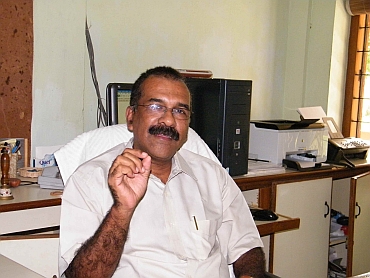
In an interview with rediff.com's Shobha Warrier, Cherian talks about how the temple wealth is a researcher's delight, it's timeless value and emphasises on the need to display it in a museum that with match the standards of Louvre.
As a person involved in the history of Kerala, do you call what has been found in the cellars of the Sree Padmanabhaswamy Temple, a treasure?
The definition of treasure according to the Treasure Trove Act, is that treasures are valuables with doubtful ownership found below the earth. The valuables found in the cellars within temple walls, which were under lock and key and there are people authorised to hold the keys. So, how can it be a treasure? It is a misnomer to call it a treasure. I would like to call it temple assets with invaluable historical, archaeological, religious and cultural significance.
...
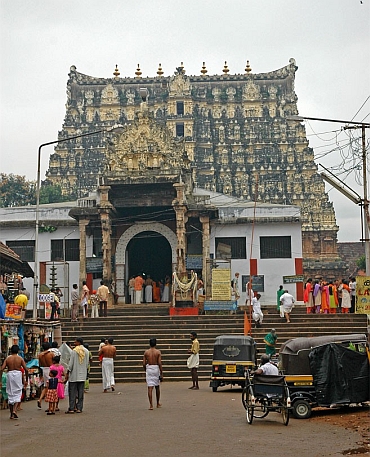
From an archaeological perspective, I prefer to define them as material sources to study our past. Most people may be interested only in the market value of the yellow metal ornaments etc, but they have greater significance as artefacts of religion, culture, aesthetics, science, technology, state, polity and other life processes that made us what we are today. They are more than what meets the eye.
To study the history of Kerala, we mostly depend on literary sources. It is a mystery that the archaeological or material evidence of our ancestors except burial monuments and associated mortuary remains have gone into hiding. Where did our cultural artefacts disappear?
After the Pattanam excavations, which unearthed enormous quantities of antiquities, this is only the second time that another considerable chunk of our past is being exposed.
As material evidence, they can expose many aspects of the society, which the literary sources could not reflect.
The temple assets could be handmade objects. They could tell us the story of the various strata of the society right from its makers, to those who brought them to the deity. They will speak volumes on our religious and cultural traditions. They can be equally significant in understanding some aspects of our commercial history.
Material objects have an intrinsic potential to unravel many aspects of our social life, which written words sometimes hide. I am excited that these assets are of a very rare kind that could even take us back to the 9th century, when the temple is believed to have had its origins.
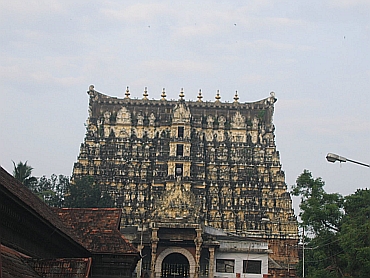
Definitely, it is a new assemblage of evidence and will need intense study to know some of the intricate aspects of our history. But right now, the thrust is on many other things.
I think everyone has a reason to be excited. The uncritical hype with regard to the market value of the assets captures the attention of the whole world. That is fine; we cannot get away from that. But that should not prevent you from seeing its timeless value.
Archaeological sources have a rare capacity to grip you -- its relationship with one's past is often direct and profound. I have noticed the excitement of ordinary people while gazing at archaeological objects not necessarily 'valuable things', from the Pattanam trenches, even at a broken earthen pot or a corroded metal object. It can emotionally bond you with your past, if you have a sensitive mind that goes beyond the market value.
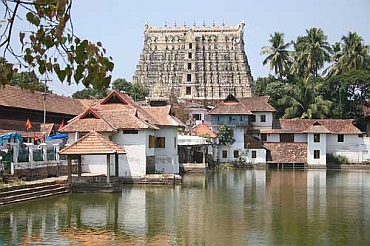
The laws of the land are very clear. First of all, there needs to be clarity about the ownership. Simply speaking, the Padmanabhaswamy temple is like any institution -- a mosque, palace, church or a synagogue -- possessing some inherited asset. Nothing prevents them from being the rightful owners.
The big question is what if such assets are archaeologically or historically significant? Here too we have time-tested laws, which empower the state to ensure its safety and conservation.
The Antiquities and Art Treasure Act of 1972 says that if you or any institution has artefacts or materials with cultural or historical value, the state has no problem in you possessing it. Nevertheless, you cannot misuse, melt or export them. That is why the Supreme Court has ordered for the preparation of an inventory of the temple assets.
I recently read in an essay by T S Subramanian (author of several books on Kerala's arts, history and culture) that the Padmanabhaswamy temple assets included Roman coins. I won't be surprised if future research would establish maritime trade as one of the major sources for the wealth of the temple.
If the temple cannot provide enough security, has the state got the authority to take it over?
Yes, the state has enough and more powers when it comes to historical and culturally significant antiquities. But I do not think such steps will be necessary in the current scenario.
There are three stakeholders. One is the present state. The second is the temple. And the third is the royal family. I am optimistic that their collective wisdom would prevail. If any confusion arises, the Supreme Court can intervene. So far the Supreme Court's interventions were crucial in placing the assets in the public domain.
Now the whole world is watching us. We have to reach at a mature decision -- one that the posterity too would be thankful about. We just cannot afford to be guilty, partisan or self-seeking or apologetic later.
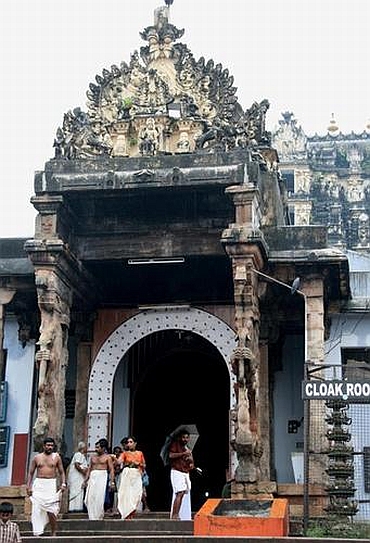
How do you react to the opinion of some rationalists that the assets should be used for public use by building hospitals, schools etc?
Rationalists too can be irrational! It reflects a condition of too much imprisonment in the present. We fail to realise that societies, communities, families and institutions have broken down not just for economic reasons. Sometimes I feel the present Malayali society has little respect for their past.
We cannot destroy the assets by melting or selling them to 'solve' the present deficiencies and difficulties. It will not be much different from a thief stealing them for his/her own rational convictions!
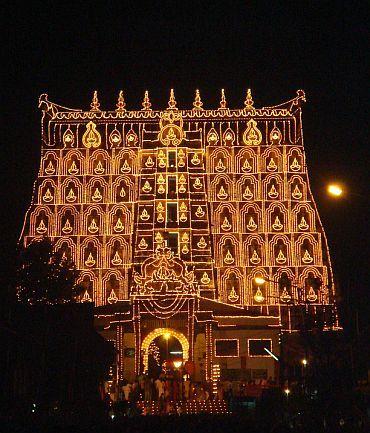
Why do we not have museums that match the quality and security of the British Museum or the Louvre? It is not because we are lacking in cultural properties. Despite valuables stolen by colonial masters and our own handwork of destroying them, India still has many exquisite assets lying neglected. This is a great opportunity for the nation to announce to the world that we had a rich cultural past which we are proud to care about.
If a museum of international standards comes up, who should be governing it?
I do not know. But it should be a professionally designed and well-managed "imaginarium". I think there are many models available worldwide like the Ashmolean Museum attached to the Oxford University, one of the oldest museums of United Kingdom dedicated to history, archaeology and art. We must try to develop something like that. There should be meaningful collaborations, multi-disciplinary approaches and interdepartmental involvements.

Pattanam finds mark a turning point in the understanding of our past since they have brought forth a plethora of material evidence related to habitation contexts from the Iron Age (1000 BCE onwards) and the long distance and regional commercial contacts since 300 BCE, for the first time in Kerala's history.
The excavations revealed brick structures, ring wells, toilet features, a wharf structure, a 2,000-year-old wooden canoe and teak bollards. The waterlogged contexts brought forth botanical items like pepper, cardamom, rice, coconut, frankincense, teak and many other wood samples.
Other finds include Mediterranean Amphora sherds (fine quality terracotta jars meant for transporting wine), Italian terra sigillatta, West Asian and Mesopotamian pottery viz. turquoise glazed pottery, torpedo jar fragments, huge quantities of Indian rouletted ware, Chinese ceramics and black and red ware. The local pottery unearthed numbers to a staggering four million.
Patttanam had flourishing metallurgical and gem/bead making factories. Nearly 50,000 antiquities were excavated and they speak about a multi-cultural, commercial and urban society that thrived on the southwestern coast of India 2,000 years back. It had maritime contacts with different regions of three continents -- Europe, Africa and Asia.
They were people we know little about -- they could not have belonged to any of the castes or religions we know of today, and their language could have been different from ones spoken today.
I think Pattnam finds can also find its rightful space in the international museum that might come up to house the precious wealth of Padmanabhaswamy.